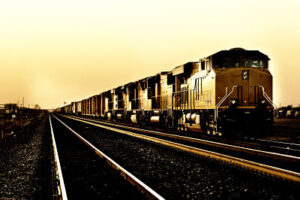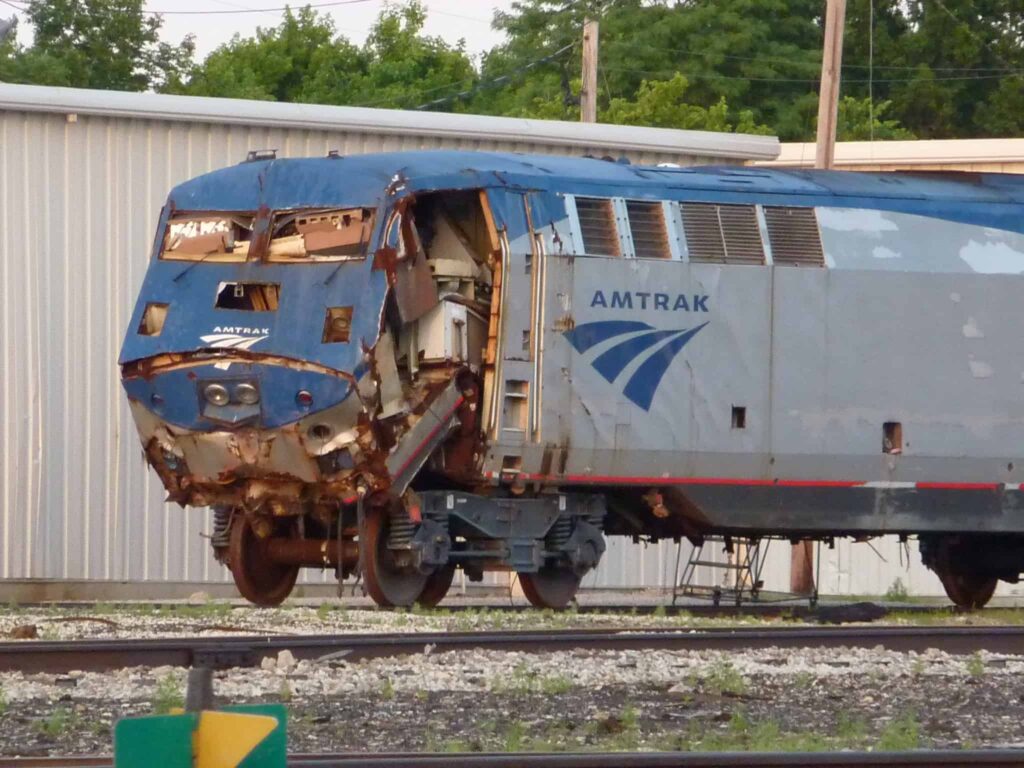 An Amtrak passenger train crashed into a stationary freight train in South Carolina, leaving two dead and 116 people injured. This incident marks the fourth fatal Amtrak train crash in less than two months.
An Amtrak passenger train crashed into a stationary freight train in South Carolina, leaving two dead and 116 people injured. This incident marks the fourth fatal Amtrak train crash in less than two months.
Crash with Freight Train
On the early morning of February 4, 2018, Amtrak Train 91 was traveling south through Cayce, SC as part of the company’s Silver Star train route from New York to Miami. Nine crew members and 147 passengers were on board the train. At approximately 2:35 a.m., the Amtrak train collided with a stationary CSX freight train.
The force of the impact was so great that it derailed the Amtrak train’s lead engine and some of its seven passenger cars, causing an estimated 5,000 gallons of fuel to spill out.
The CSX freight train, made up of two locomotives and 34 empty cars, was empty and unattended. The freight train had just unloaded a shipment of automobiles at a nearby railroad siding, which is a low-speed section of track distinct from the main line.
According to Lexington County authorities, two Amtrak employees were killed in the train crash: Train engineer Michael Kempf, 54, of Savannah, GA and conductor Michael Cella, 36, of Orange Park, FL.
Additionally, 116 people were transported to area hospitals to receive treatment for injuries ranging from scratches to broken bones. Eight of them were reportedly still hospitalized as of the morning of February 5.
Rail Switch at Fault?
The National Transportation Safety Board (NTSB) is currently investigating the cause of the fatal Amtrak train crash. According to NTSB Chairman Robert Sumwalt, however, a rail switch that had been improperly set may have been the culprit.
Amtrak Train 91 should have continued straight down the tracks on which it had been traveling. However, a rail switch had been manually set to divert the train onto the railing where the CSX freight train had been parked. The rail switch was held in its alignment with a padlock, which is reportedly standard procedure when switches are manually operated.
For Amtrak’s part, Richard Anderson, the company’s CEO and president, noted that CSX owned, operated, and had control of the tracks, switches, and signals where the crash occurred, a fact the NTSB confirmed. At the time of the incident, the CSX dispatch center was manually controlling the tracks and directing the Amtrak train via telephone communications, as the signal system had apparently gone down.
“Key to [the] investigation is learning why that switch was lined (aligned) that way,” Mr. Sumwalt said at a news conference about the fatal Amtrak train crash.
Aiding the NTSB in its investigation is video recovered from the front of the Amtrak train, which has been sent to Washington, DC. NTSB investigators will examine the footage in an attempt to determine what happened during the crash, including whether the train braked or whether it was exceeding the speed limit of 59 miles per hour.
Fourth Fatal Amtrak Train Crash
The South Carolina collision was the fourth fatal Amtrak train crash in less than two months, though the circumstances have varied in each case.
On January 31, 2018, a chartered Amtrak train carrying more than half of the Republican members of Congress from Washington DC to a policy retreat in West Virginia crashed into a garbage truck at a railway crossing in Crozet, VA. One person was killed and six others were injured. Witnesses reportedly informed NTSB investigators that the garbage truck was trying to “snake” its way through the crossing gates, even though traffic signals warned of an oncoming train. Despite the apparent culpability of the garbage truck in this crash, Mr. Anderson admitted that Amtrak and transportation and rail officials have to invest more in technology to make the crossings safer and educate people about them.
On January 14, 2018, an Amtrak train struck and killed Eugene and Dorothy Lyons in Nash County, NC. Mrs. Lyons had reportedly attempted to drive the couple’s SUV around the lowered safety arm at a railroad crossing.
In the deadliest recent Amtrak train crash, Amtrak Cascades Train 501 derailed near DuPont, WA on December 18, 2017. The train fell over an overpass and onto Interstate 5, killing three people and injuring approximately 100 others. The train had been making the Cascades route’s inaugural voyage from Seattle, WA to Portland, OR.
At the time of the fatal derailment, the train had reportedly been traveling 80 miles per hour as it approached a curve at Milepost 19.8 with a speed restriction of 30 miles per hour. The train’s engineer alleged that he did not see the signs alerting him to his position and to the speed reduction prior to hitting the curve. A subsequent investigation conducted by CNN found that conductors and engineers had warned Amtrak supervisors that they did not feel that they had been properly trained on the new route.
Positive Train Control
In the wake of this recent spate of fatal Amtrak train crashes, NTSB Chairman Sumwalt has pointed out that at least some of these accidents may have been prevented if a well-known piece of technology had already been implemented: Positive Train Control (PTC).
PTC has been praised by the Federal Railroad Administration as the “single-most important rail safety development in more than a century.” It is a technological system that combines GPS, wireless radio, and computers to monitor trains and prevent them from colliding, derailing, or traveling too fast.
Soon, PTC will not only be a good idea – it will be required by law. Following a head-on train crash in 2008 that killed 25 people near Los Angeles, Congress passed legislation ordering the nation’s railroads to adopt PTC by December 2015.
PTC was not fully implemented by that deadline, however, because several railroad companies threatened a shutdown of services unless the government granted them more time. Congress set a new deadline of December 31, 2018, though extensions could be granted up until 2020 if the railroad companies meet certain requirements.
Train Accident Litigation
If you have been hurt in a train accident, you may be considering pursuing a personal injury claim to obtain financial compensation. However, finding out who is responsible for a train crash or derailment is often a difficult process. There may be many potential causes, including faulty traffic and train signals, distracted, negligent, or inexperienced engineers, improperly maintained tracks, and mechanical failure.
Only by determining the causes of the train crash can the responsible party or parties be properly identified. Depending upon the nature of the accident, you may be able to pursue a claim against the company operating the train, the company maintaining the tracks, the train’s manufacturer, the driver of another vehicle, or some combination of these. Identifying all the parties potentially at fault is essential because those who fail to bring their cases forward within the time frame specified by law may find themselves forever barred from obtaining the justice and compensation these deserve.
Faced with such obstacles, many injured people find that they may benefit from the guidance of an experienced lawyer, like the Chicago personal injury lawyers at GWC Injury Lawyers, Illinois’ largest Personal Injury and Workers’ Compensation law firm.
If you have been wrongfully injured, in a train accident or in some other way, please contact GWC today to schedule a free consultation with one of our attorneys. Call our office at (312) 464-1234 or click here to chat with one of our representatives.
<< BACK TO BLOG POSTS